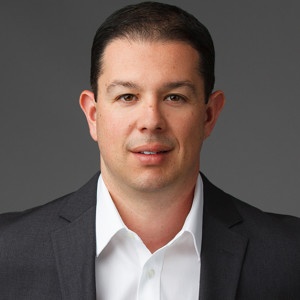As the real estate industry continues to feel the effects of the financial markets, day cleaning is emerging as an integral element in maintaining a stable bottom line. Daytime cleaning can potentially add to a property’s return on investment by lowering overall operating costs, contributing to tenant retention, and attracting new tenants seeking “green” commercial space.
Green practices are an important and visible way for building operators to meet sustainability goals. After all, U.S. real estate accounts for 40 percent of primary energy use, 39 percent of CO2 emissions, and 72 percent of electricity use. By lowering overall energy consumption, real estate owners can directly reduce energy costs and their environmental footprint. The benefits are so evident that companies are increasingly beginning to consider and implement day cleaning as a part of their overall strategy of corporate responsibility and environmental management.
BOMA Intl., in its Building Energy Efficiency Program (BEEP), suggests utilizing janitorial practices to save energy. The facilities janitorial operations are often ignored when developing energy-saving strategies. Strategies to reduce energy demand include team cleaning, coordination with security and daytime cleaning. These aforementioned strategies can potentially bring noteworthy energy savings annually.
When making a switch to daytime cleaning, it is important to keep an open mind and be willing to implement new ideas, purchase more efficient equipment and be flexible with employee schedules. Routine building operations may dictate when certain areas of a building are cleaned and in a manner the service is provided. Daytime cleaning may not be suitable for all of buildings or situations and the building tenants and users need to be part of the transition process and dialogue. An initial evaluation should be performed to determine the “fit” and the potential savings that will be incurred from energy curtailment and usage.
Objective
- Meet Sustainable Goals
- Decrease energy consumption and environmental footprint
- Maintain Cleaning Levels According to APPA Standards
- Reduce Tenant Complaint Calls
Assumptions
Daytime cleaning has the potential to reduce operating costs because the lights are off for all or most of the night. Energy costs fall, bulbs and ballasts last longer and labor costs related to maintenance and security drop. Additional energy and maintenance savings accrue through reduced use of elevators and HVAC systems. As energy costs rise, so do the savings from moving to daytime cleaning.
Daytime cleaning may not be suitable for all facilities or situations. It’s important to fully understand tenant’s operational requirements before initiating a daytime cleaning program. For example, in a facility conducting daily training seminars, the majority of the space might not be available for cleaning during the day. Government offices and law firms may have specialized privacy needs, making some areas off limits during set times of the day or week. However, it is worth looking at the advantages of daytime cleaning to reduce energy consumption.
Generally, daytime cleaning works best at large, single tenant office buildings, pharmaceutical sites, hospitals, factories, schools, and facilities that are open 24/7. Consideration must be made to the amount of traffic in the building. Buildings that have heavy foot and vehicular traffic are not good candidates for daytime cleaning.
Educating the building occupants and training the cleaning staff is the most important factor in making a successful switch to daytime cleaning. There are suitable times for custodians to complete various activities throughout the day. Activities such as mopping should be done during slow business hours, before the building opens or just after closing. Other activities such as restocking restroom supplies and emptying trash receptacles can be accomplished during normal business hours. Cleaning areas such as break rooms or conference rooms can easily be done when the rooms are not occupied.
Tenant Communications & Program Marketing
An effective daytime cleaning program requires a culture change among building occupants. Marketing the program effectively and educating occupants on the inherent benefits in the switch will pay a key role in the programs overall success. PEI emphasizes it’s as important to educate occupants before the change as it is to train custodians. Real estate owners, property managers, building service contractors and tenants play key roles in a daytime cleaning program. All parties involved must be on the same page. Not only must the facility services provider and their custodians master the daytime cleaning of a building without disturbing tenants, but also real estate owners and property managers must be willing to communicate the change and why it’s necessary.
Growing public concern over indoor air quality (IAQ) has encouraged many facilities to be proactive toward cleaning with health issues in mind (i.e. High Performance Green Cleaning program). The quality of the indoor environment, both from a health and aesthetic standpoint, is directly related through proper cleaning and maintenance. Moreover, Cleaning for Health and daytime cleaning may produce tangible savings and health benefits. Furthermore, it is a great PR platform for the daytime cleaning outreach.
Tent cards promoting the use of these healthier and more efficient cleaning methods can be placed in break rooms, conference rooms, restrooms and other areas to create awareness of the enlightened methods involved in a daytime cleaning scenario.
Operational Guidelines
Full-time employees from 6:00 AM to 4:00 PM would perform the daytime cleaning Monday thru Friday. Semi-regular tasks would be scheduled to accommodate cleaning and maintenance activities that can be performed between the hours of 6:00 PM and 10:00 PM Monday thru Friday or over the weekends.
Switching from nighttime to daytime cleaning can be accomplished with little or no interruption to a building’s cleaning operation. The transition can be seamless if your regular nighttime cleaning is completed on a Friday and begin your daytime schedule the following Monday. Utilize the weekend to train the cleaning staff for the adjustment. A successful switch can potentially result in higher productivity, a cleaner building, cost savings, and higher NOI for the owner.
A day cleaning staff would be available to respond to any special requests and additional services. This would include the ability to service specialized areas.
- A pilot program should be in place for a 6-month trial to measure cleaning effectiveness, tenant buy-in and energy savings.
- Daytime cleaning enhances job security, which contributes significantly to lower employee turnover rates. Employees prefer to work day shifts. This is due to several factors including better access to transportation and having the evenings to spend with the family. As well as keeping employees on staff longer, offering daytime shifts makes recruitment for new employees easier.
Examples of how an employee may work in a daytime cleaning scenario:
- Emptying trash: A mobile waste collection system such as a resin-molded polyethylene refuse barrel equipped with wheels and fitted with a wrap-around apron or caddy with pockets for holding spot-cleaning spray solution, microfiber dusting cloths, and trash liners of various sizes.
- Application: Day cleaning employee navigates the waste receptacle and onboard tools directly to the location where it’s needed, dusts & spot-cleans in unoccupied areas, empties trash and replaces liners in fluid motions, then moves on to the next location.
- Vacuuming: Dedicated to vacuuming carpeting, hard floors, upholstery and other surfaces. Utilize lightweight backpack vacuuming system with four-stage filtration, ergonomic design and harness for distributing weight across hips, and waist belt-mounted attachments. New quiet backpack vacuums with adjustable power and sound levels enable working in close proximity to call centers or office staff without disruption of phone calls or other work.
- Application: Performing several tasks in one trip with the same equipment—streamlines dusting and vacuuming throughout the building. With simple tool changes, the employee can clean upholstery, carpet edges, corners, stairwells, A/C vents, etc., according to the building’s cleaning specifications. Sealed four-stage filters in one-piece backpacks eliminate dust escape common in unsealed systems, reducing dusting labor while protecting overall air quality.
- Restrooms: This activity should be performed early in the morning and restocked during normal business hours.
- Break / Conference rooms: Cleaning these areas can easily be cleaned when the rooms are not occupied during normal business hours.
The Collective Bargaining Agreement, in most Union markets, requires notification of the employee shift change. Negotiations with Union representatives would commence after notification to implement the daytime cleaning program. Resistance is anticipated from the Collective Bargaining Unit.
Security
Night cleaning has inherently higher levels of concerns for information security. This is primary driven by customers leaving confidential papers and materials on desktops. During the day the number of customers and on going business activities are high. This reduces opportunities for confidential information to be compromised. Security schedules would need to be modified to reflect the reduced cleaning activity during the night cleaning operations.
A potential decrease in security related costs could be realized. Companies that have switched to daytime cleaning have indicated a drop in theft and charges for false security alarms.
Energy Consumption
Energy consumption is expected to decrease due to lighting and HVAC requirements operating beyond scheduled hours.
An energy consumption baseline will need to be established prior to the implementation of the daytime cleaning program to substantiate the programs success.
Currently the PEI night cleaning staff shuts off the lights in the tenant areas after the cleaning activities are completed. It is recommended to either update building engineering controls to automatically shut off non-essential lighting or utilize the security staff to capture this role.
Pandemic Program
A Pandemic Preparedness Program will be developed to address the enhanced cleaning requirements during a pandemic. This will be achieved by partnering with the property managers to develop procedures, responsibilities, lines of communication and commitment to the shared expectations of the program.
Implementation of a Pandemic Program includes increased cleaning frequencies of high contact surfaces or areas. This includes but not limited to doorknobs, handrails, restroom fixtures, lobbies and common areas. The daytime cleaning program would be necessary to mitigate the risk of contact contamination. Night Cleaning would not permit multiple cleaning of high contact surfaces during the normal business hours. In the event of a full pandemic, social distancing strategies to reduce human contact between building occupants will need to be established. Social distancing minimizes the kind of social contact that enables virus transmission.
One example of a social distancing practice is limiting functions that require assembling many people into a single indoor space. Thus, in this type of strategy, night cleaning is the best method to minimize contact between building occupants.
About PE Facility Solutions
PE Facility Solutions, LLC, now under the brand Pristine Environments, manages, maintains and optimizes the performance of mission critical facilities for corporate real estate owners in nearly 100 million square feet of specialized buildings throughout North America. With a broad range of experience across an array of industries, including life sciences/cleanrooms, aerospace, datacenters,
oil & gas, luxury retail, sports technology & fitness, and commercial real estate, our organization of over 1,000 professionals keeps our customers’ buildings and facilities operating efficiently, sustainably and on budget.



